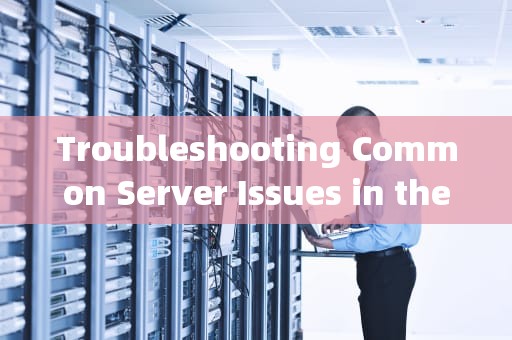In the digital age, where businesses and individuals rely heavily on online platforms for communication, data storage, and operations, server problems can bring activities to a screeching halt. These issues not only disrupt services but also pose significant risks to productivity and security. This article delves into some of the most prevalent server problems encountered today, their potential causes, and effective troubleshooting strategies to mitigate these challenges.

Understanding Server Problems
A server is essentially a powerful computer that manages data requests from other computers or devices. It plays a critical role in hosting websites, applications, and databases, making it the backbone of modern IT infrastructure. However, like any complex system, servers are prone to malfunctions and failures. Common server problems include hardware failures, software bugs, network connectivity issues, overload conditions, and security breaches.
Hardware Failures
Hardware-related issues are among the most straightforward yet often the most challenging to predict and prevent. These can range from failing hard drives, faulty RAM, overheating CPUs, to power supply unit (PSU) failures. Symptoms may include unexpected shutdowns, slow performance, or error messages indicating hardware malfunctions.
Troubleshooting Steps:
1、Regular Maintenance: Schedule periodic checks and maintenance to ensure all components are functioning correctly.
2、Monitoring Tools: Use server monitoring tools to track hardware health metrics such as temperature, disk usage, and memory utilization.
3、Redundancy: Implement redundant hardware setups, such as RAID configurations for disks or backup power supplies, to minimize downtime during failures.
4、Timely Replacement: Replace aging or known problematic hardware before they fail completely.
Software Bugs and Updates
Software glitches, bugs, or compatibility issues can lead to server crashes, data corruption, or unresponsive services. Outdated software versions are particularly vulnerable to exploits and inefficiencies.
Troubleshooting Steps:
1、Keep Software Updated: Regularly apply patches and updates from reputable sources to address security vulnerabilities and improve performance.
2、Compatibility Testing: Before deploying new software or updates, conduct thorough testing in a staging environment to identify any potential conflicts.
3、Log Analysis: Analyze server logs to pinpoint errors and trace back their root causes.
4、Revert Changes: In case of a recent update causing issues, have a rollback plan in place to revert to a stable state.
Network Connectivity Issues
Poor network connectivity can severely impact server accessibility and responsiveness. This could be due to misconfigured network settings, DNS resolution problems, or physical infrastructure issues like damaged cables or router malfunctions.
Troubleshooting Steps:
1、Network Diagnosis: Use tools likeping,traceroute, and network monitoring software to diagnose connectivity issues.
2、Check Configurations: Ensure all network configurations, including IP addresses, subnet masks, and gateway settings, are correctly set up.
3、Physical Inspection: Inspect physical connections and equipment for signs of damage or loose connections.
4、ISP Coordination: If the issue lies beyond your local network, coordinate with your Internet Service Provider (ISP) for assistance.
Overload Conditions
Server overload occurs when the server's resources (CPU, memory, disk space) are insufficient to handle the incoming workload, leading to slow response times or even crashed services.
Troubleshooting Steps:
1、Resource Monitoring: Continuously monitor resource usage using tools like top, htop, or specialized server management panels.
2、Scalability Planning: Plan for scalability by adding more resources or distributing the load across multiple servers (load balancing).
3、Optimization: Optimize code, database queries, and server configurations to enhance efficiency and reduce unnecessary load.
4、Traffic Management: Implement rate limiting and caching mechanisms to manage peak traffic effectively.
Security Breaches
Security breaches, including hacking attempts, malware infections, or data leaks, not only compromise data integrity but also trust and reputation.
Troubleshooting Steps:
1、Firewall and Antivirus: Ensure robust firewall rules and antivirus software are in place and up-to-date.
2、Regular Audits: Conduct regular security audits and vulnerability assessments to identify and address weaknesses.
3、Incident Response Plan: Have a well-defined incident response plan to quickly respond to and mitigate security incidents.
4、User Education: Educate users about best practices for password management, recognizing phishing attempts, and safe browsing habits.
Conclusion
Server problems, though inevitable, can be effectively managed through proactive monitoring, regular maintenance, strategic planning, and timely intervention. By understanding the common causes and implementing appropriate troubleshooting measures, organizations can minimize downtime, enhance performance, and safeguard their digital assets against potential threats. As technology continues to evolve, staying informed and adaptable is key to maintaining a resilient and secure server infrastructure in the ever-changing digital landscape.
随着互联网的普及和信息技术的飞速发展台湾vps云服务器邮件,电子邮件已经成为企业和个人日常沟通的重要工具。然而,传统的邮件服务在安全性、稳定性和可扩展性方面存在一定的局限性。为台湾vps云服务器邮件了满足用户对高效、安全、稳定的邮件服务的需求,台湾VPS云服务器邮件服务应运而生。本文将对台湾VPS云服务器邮件服务进行详细介绍,分析其优势和应用案例,并为用户提供如何选择合适的台湾VPS云服务器邮件服务的参考建议。

工作时间:8:00-18:00
电子邮件
1968656499@qq.com
扫码二维码
获取最新动态
